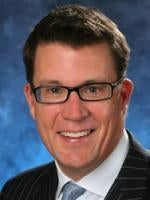The past decade has seen a tremendous amount of private equity investment in physician practice recapitalizations, primarily in hospital-based practices such as anesthesiology and radiology as well as “retail medicine practices” like dermatology and ophthalmology/optometry, to name a few. Orthopedics, on the other hand, has received less attention from investors for a few reasons. First, the business characteristics that make orthopedics attractive to private investors—namely the ability to create leverage through ancillary services—have allowed orthopedic group practices to remain independent and not seek outside capital. In addition, and equally as important, orthopedic physicians have a tendency to prefer independence.
Seven Considerations:
1. Aging Population
Due to today’s aging population, we are seeing an increase in the number of orthopedic procedures, such as knee implants, hip implants, shoulder, back and neck surgeries. Moreover, the majority of this population is insured under the federal Medicare program.
2. Alternative Payment Initiatives
Orthopedics lends itself well to the increasing interest of the Medicare program and many private payers in alternative payment arrangements, such as the Bundled Payment for Care Improvement (BPCI) Initiative introduced by the Centers for Medicare and Medicaid Services (CMS) that will test a new iteration of bundled payments for 32 Clinical Episodes and aim to align incentives among participating health care providers for reducing expenditures and improving quality of care for Medicare beneficiaries. For example, the BPCI-Advanced model, recently introduced by CMS, will cover 29 procedures, nine of which are orthopedic in nature including spinal fusions, upper and lower extremity major joint replacements, and back and neck procedures, etc.
3. Move Toward Outpatient Settings
Closely related to the value-based payment alternatives described above is the push by payers to encourage more effective use of outpatient settings, such as ambulatory surgery centers (ASCs). CMS regularly approves additional procedures that can be completed in an ASC setting; when coupled with improved technology, the concept of recovery care center and other technological improvements, the ASC is going to hold a prominent place in the patient care setting. Orthopedic surgeons or their practices are often investors in ambulatory surgery centers. ASC investments are very attractive to outside investors, such as private equity investors due to the leverage they create through facility fees generated by the surgeons who utilize them.
4. Leverage Created Through Ancillaries
Orthopedics is one of the few practices that utilizes multiple ancillary services, including imaging, physical therapy, and durable medical equipment and, as noted above, ambulatory surgery. These service lines have the ability to generate significant cash flow and, when the relationships between the services and the physicians who refer them are structured correctly, comply with all applicable federal anti-referral laws, e.g., the federal Stark Law and the federal Anti-Kickback Statute. Many larger practices own these service lines. When coupled with ambulatory surgery, these ancillary services can provide patients with efficient and effective episodic care for many procedures. Moreover, it is just these types of services that will increase purchase multiples private equity sponsors are going to be willing to pay when recapitalizing orthopedic practices.
5. Hospital Relationships
Hospital relationships are often key to successful orthopedic practices. Although many procedures can be done in ASC settings, a substantial number require hospitalization. Many of the early adopters of the physician-owned hospital model are still profiting from their investments in these facilities and orthopedic practices with such investments are likely to be highly prized by outside investors (as they are by consolidators such as United Surgical Partners and Surgical Care Affiliates, to name a few). Even those practices without ownership in a hospital often have deep and, sometimes, complex relationships with local health care systems and hospitals. These relationships may take the form of medical directorships, personal services arrangements and/or clinical co-management agreements, to name a few. Investors are likely to see strong hospital relationships as a “need to have” with respect to many practices.
6. Appeal to Physicians
Since orthopedic surgeons are well known for being strongly independent, one has to question why a recapitalization transaction might be attractive to these physicians. In a word: capital. Older physicians, in particular, may find that a transaction will afford them a better return than will a traditional retirement buyout. Typically, a normal practice buyout of a retiring physician will be based upon the physician’s receivables and, possibly, a return of capital (in those instances where a physician also owns an interest in an ASC there is likely a buyout there as well). Compare that to a transaction where the physician will profit from a purchase of 51-90% of his practice at a double digit multiple of EBITDA. Many older physicians will find the argument for a recapitalization very compelling. Even those physicians who aren’t near retirement are not only likely to see substantial yields on their investments, but will also benefit from capital infusions to increase business development, hiring of extenders, and improve revenue cycle management and information systems. Finally, the proverbial “second bite at the apple” (when the practice is sold a second time) has the potential of returning substantial profits from physicians who hold rollover equity.
7. Diligence Will Be Important
For the many reasons discussed above, investors are likely to focus on diligence in their assessment of these practices. Ownership of ASCs by orthopedic surgeons and/or their groups implicates the AKS and could be focus for regulators in the coming years. Moreover, the ownership of, and referral to, ancillaries, such as imaging, physical therapy (PT) and durable medical equipment (DME), if not structured properly can result in violations of the Stark Law, as well as the AKS or other laws and rules that can increase enforcement risk. In addition, increasing use of extenders by orthopedic physicians has the potential for creating billing problems and irregularities. Finally, while usually not considered a “physician-centric” set of issues, investors are likely going to want to review relationships, such as clinical co-management or medical director, arrangements with hospitals. The obvious reason for this review is to determine the legal and regulatory risk into which an investor could be buying. However, and equally as important, this review can have an effect on the quality of the practice’s earnings and, ultimately, the purchase price an investor is willing to pay.
With the coming wave of orthopedic practice acquisitions, it will be incumbent upon investors and physicians alike to be cognizant of the reasons for consolidation and the various considerations attendant to such transactions.




 />i
/>i
